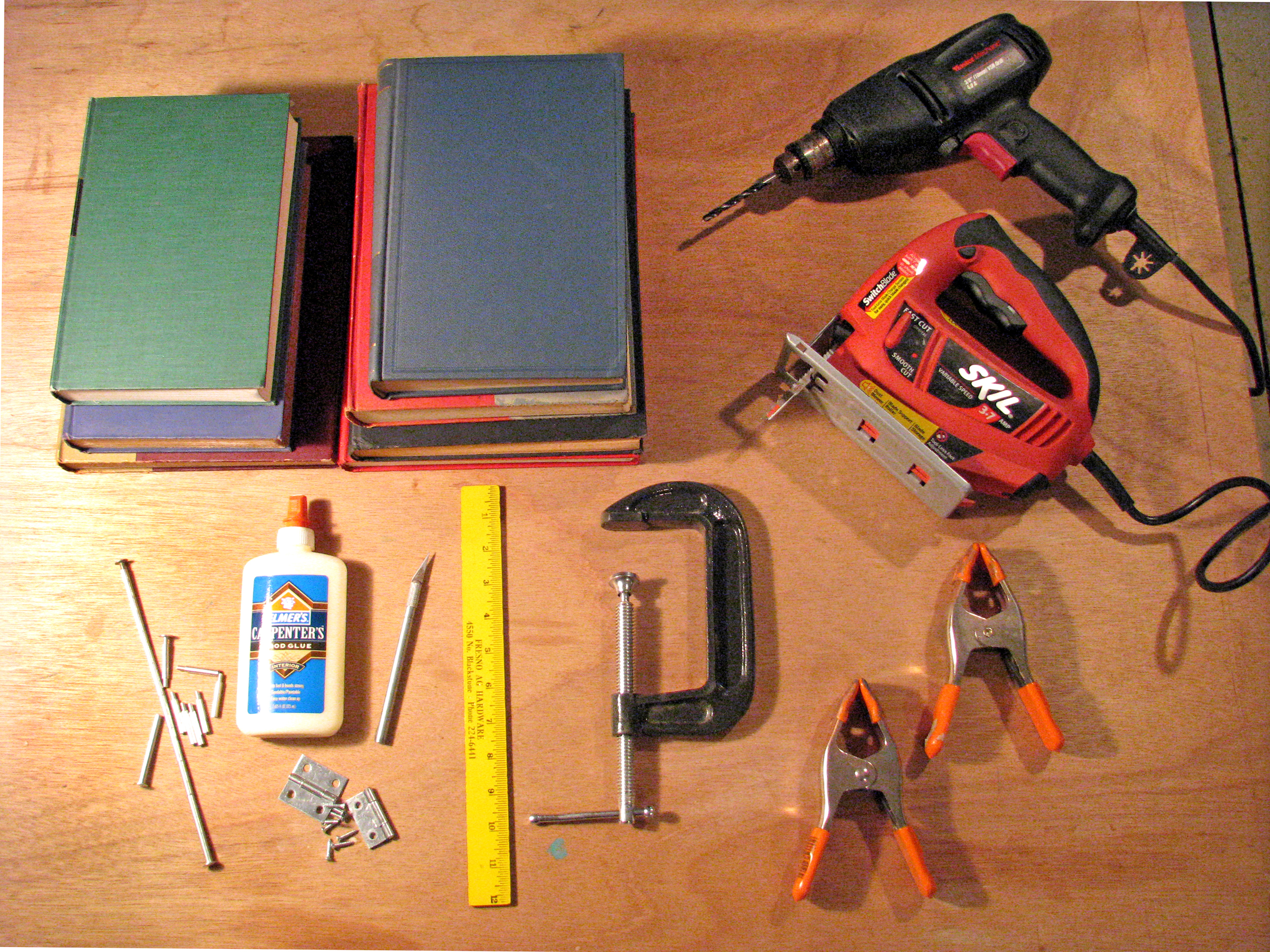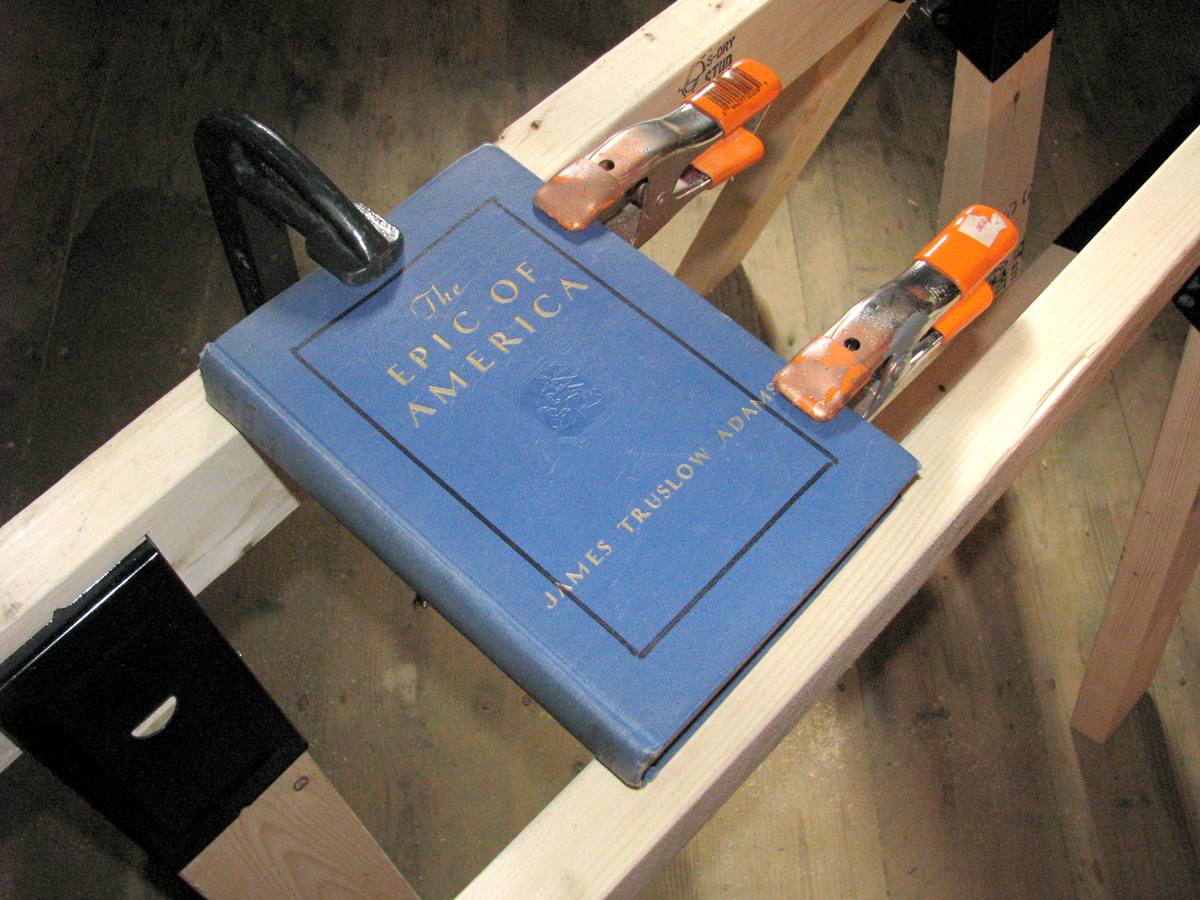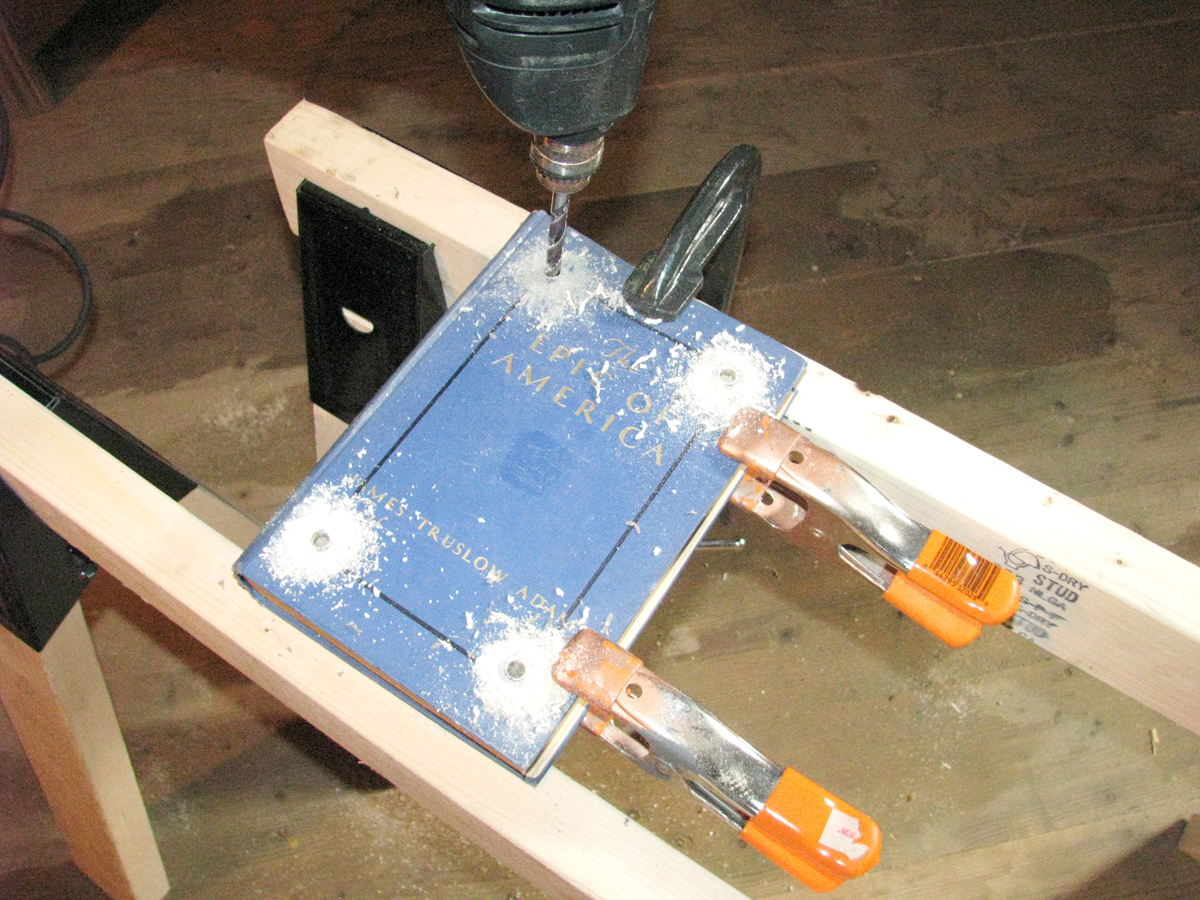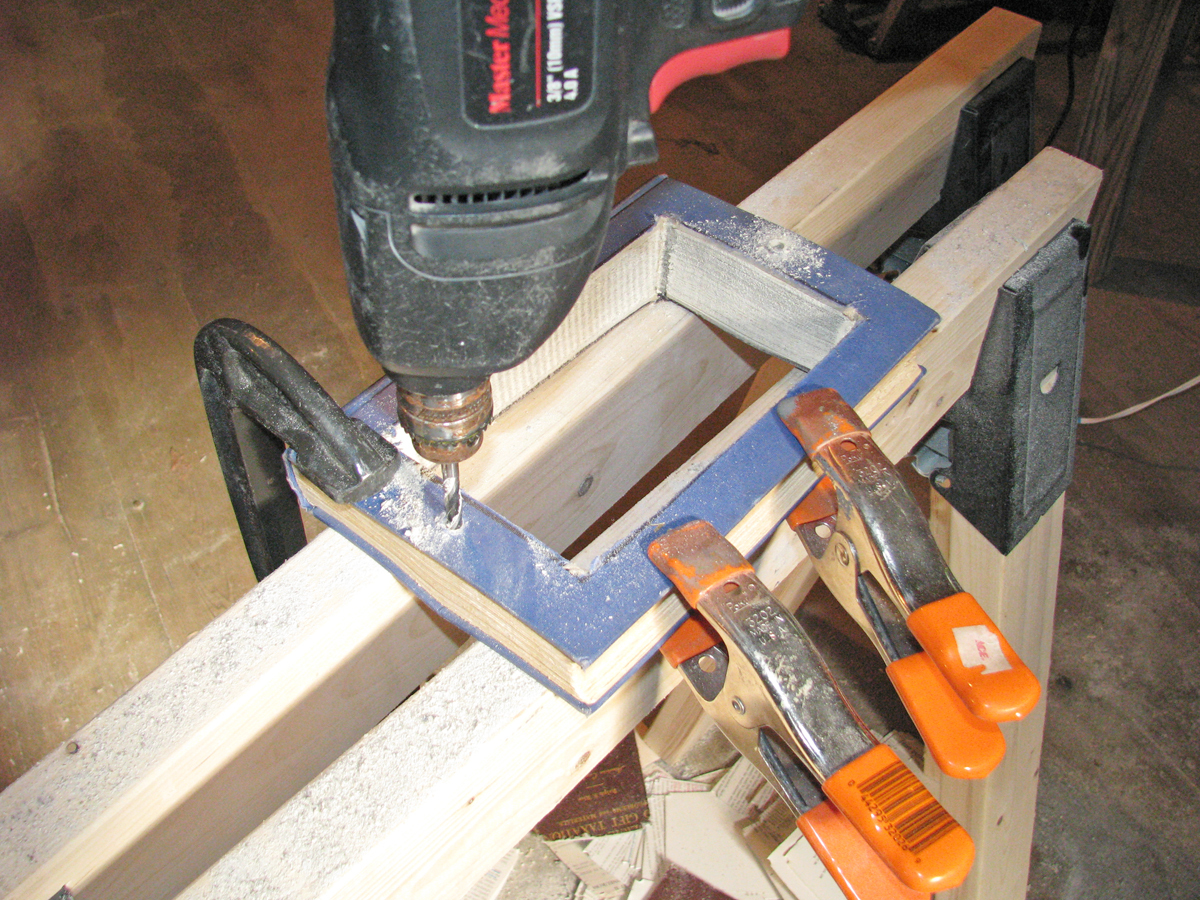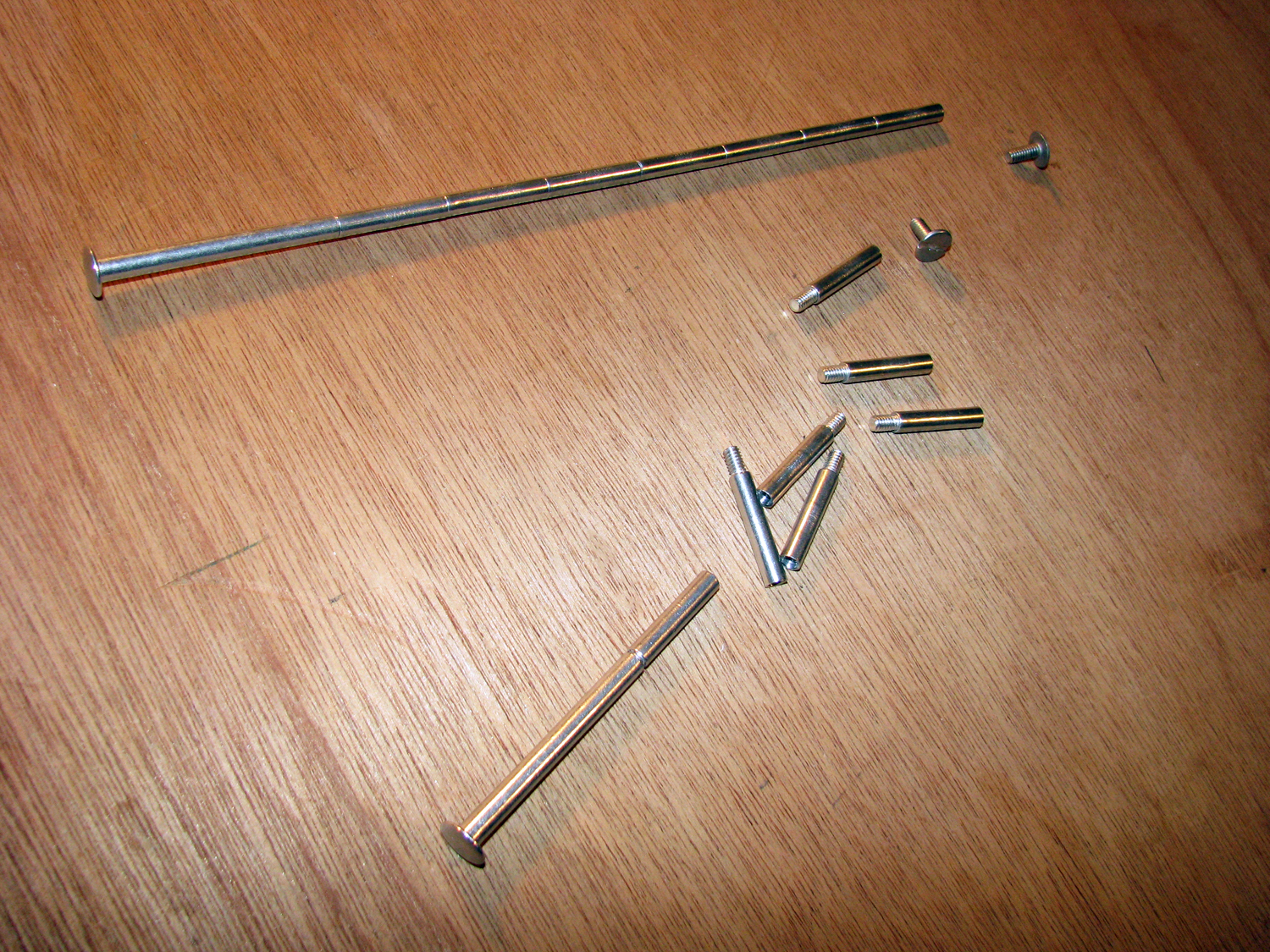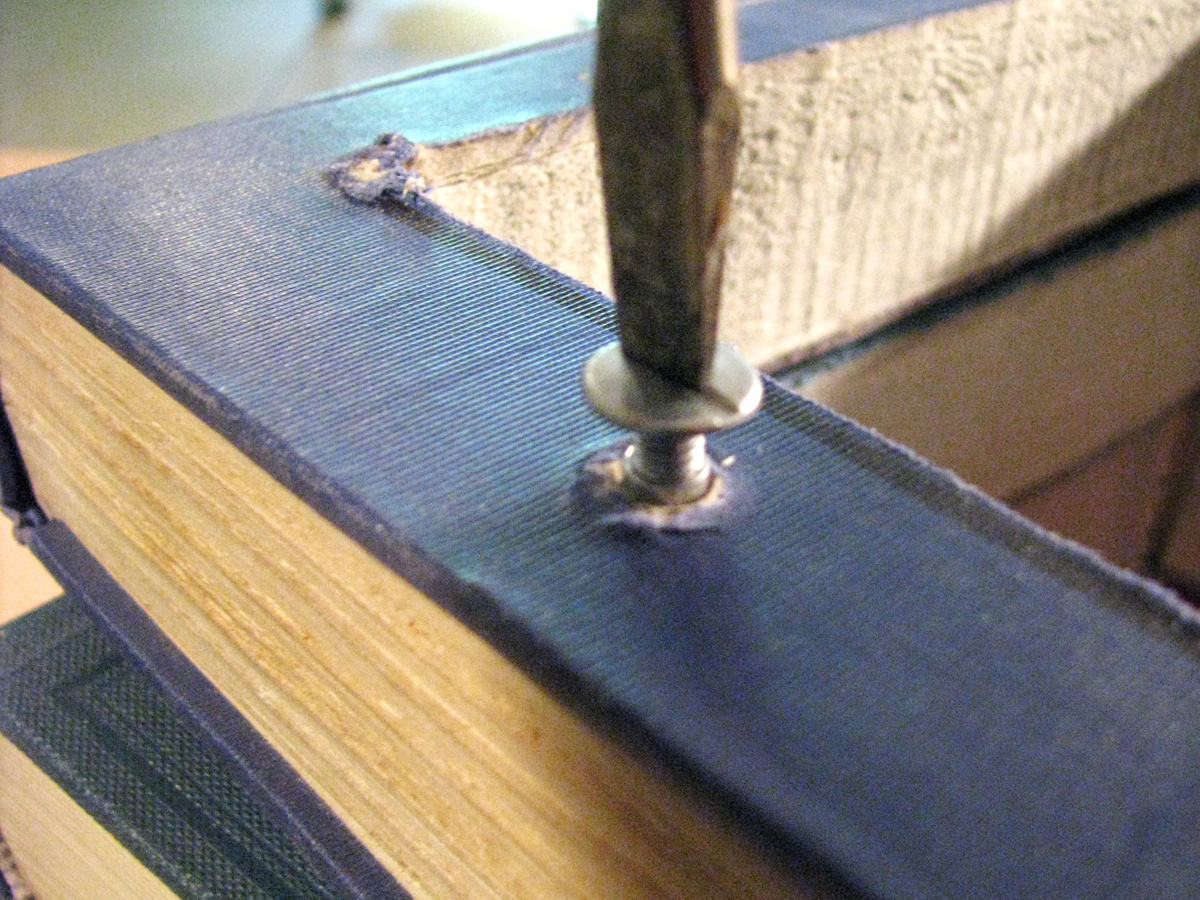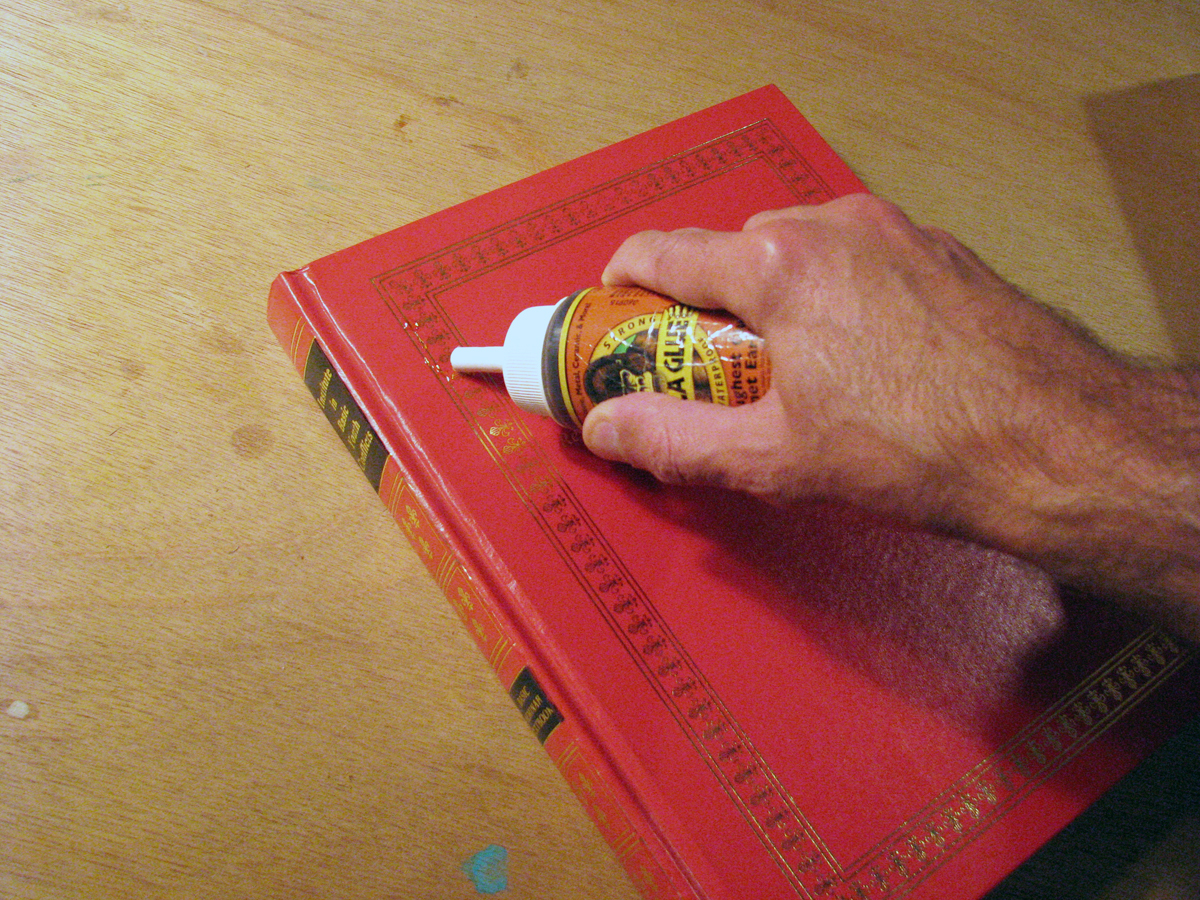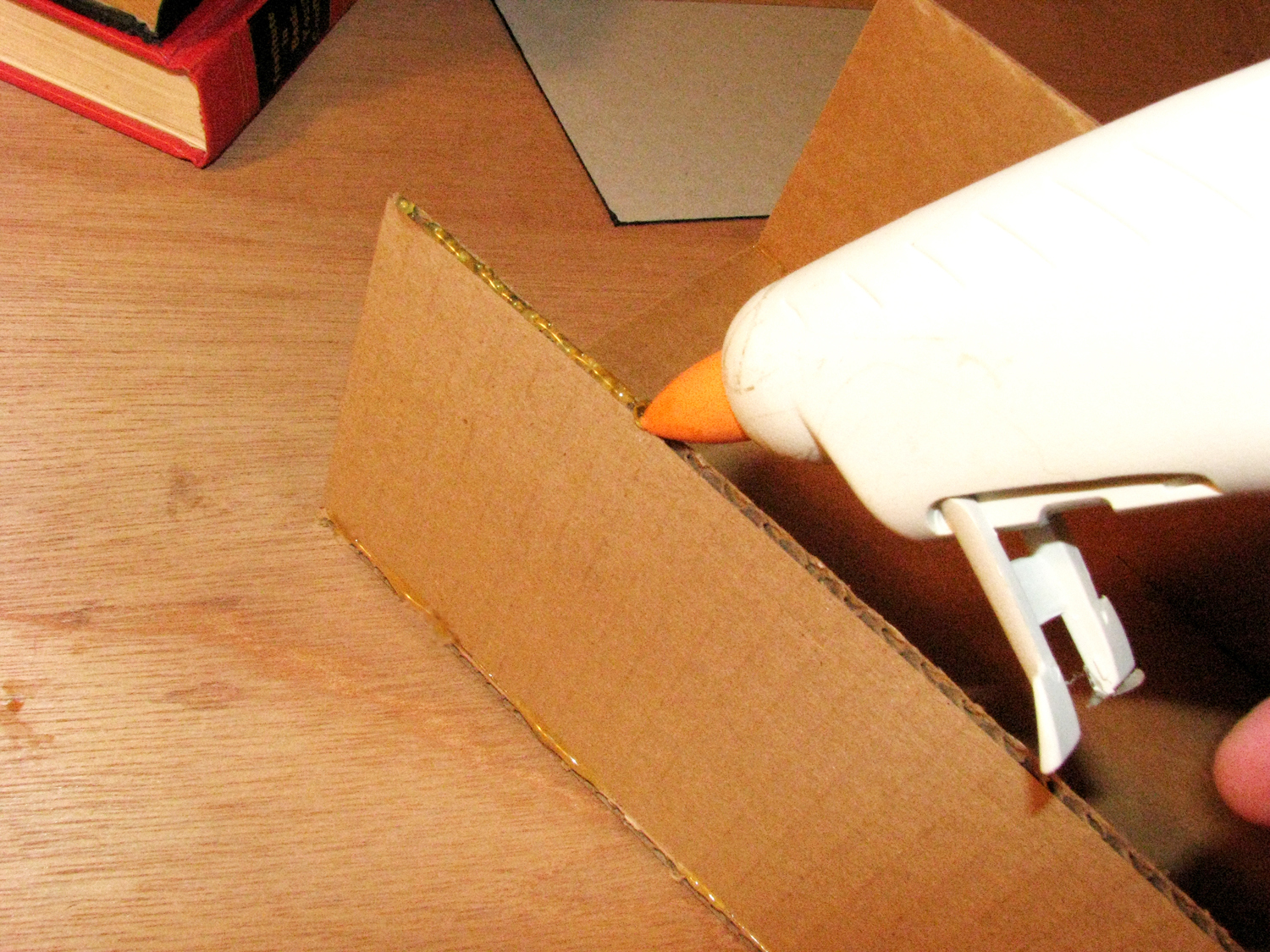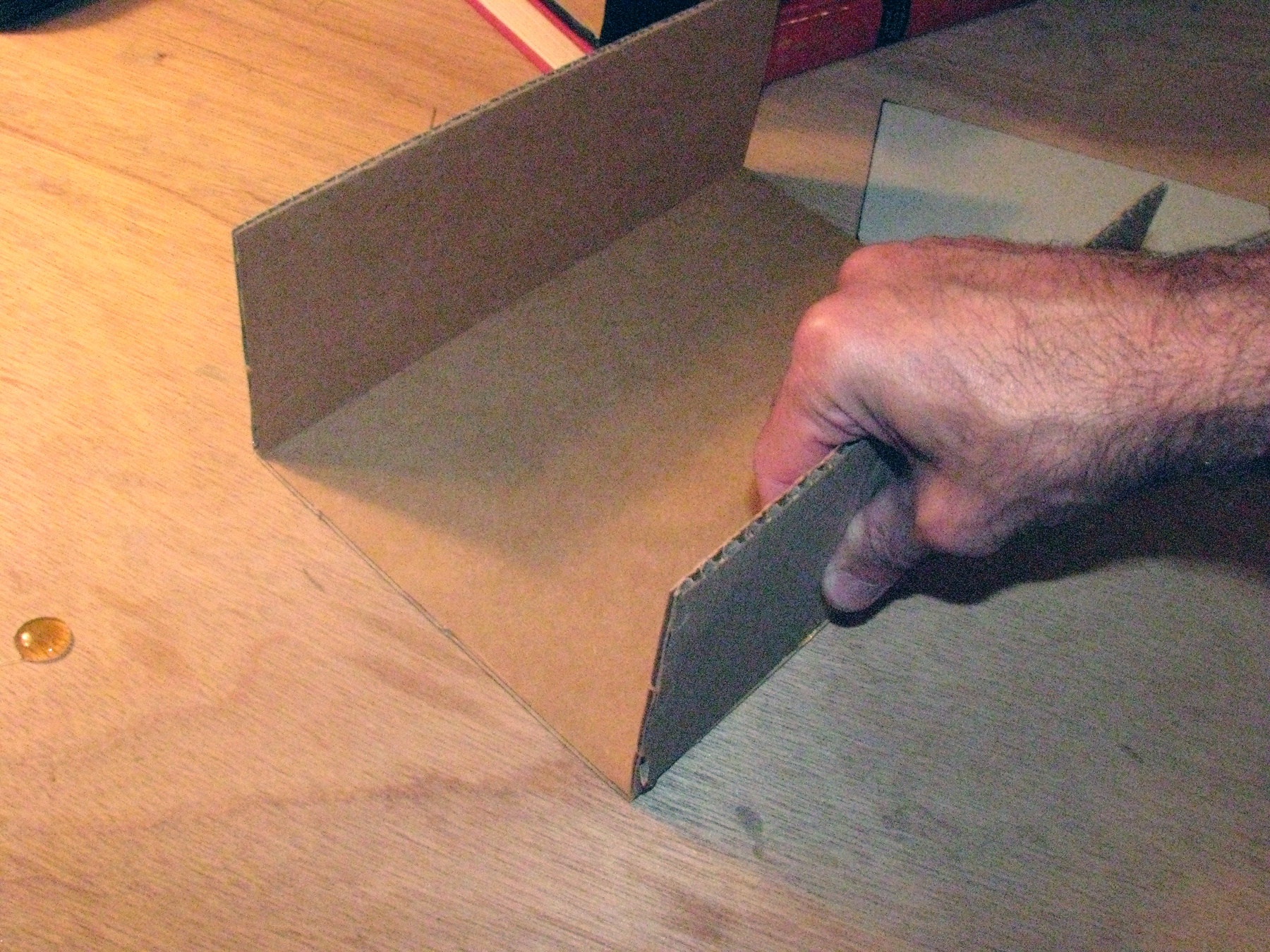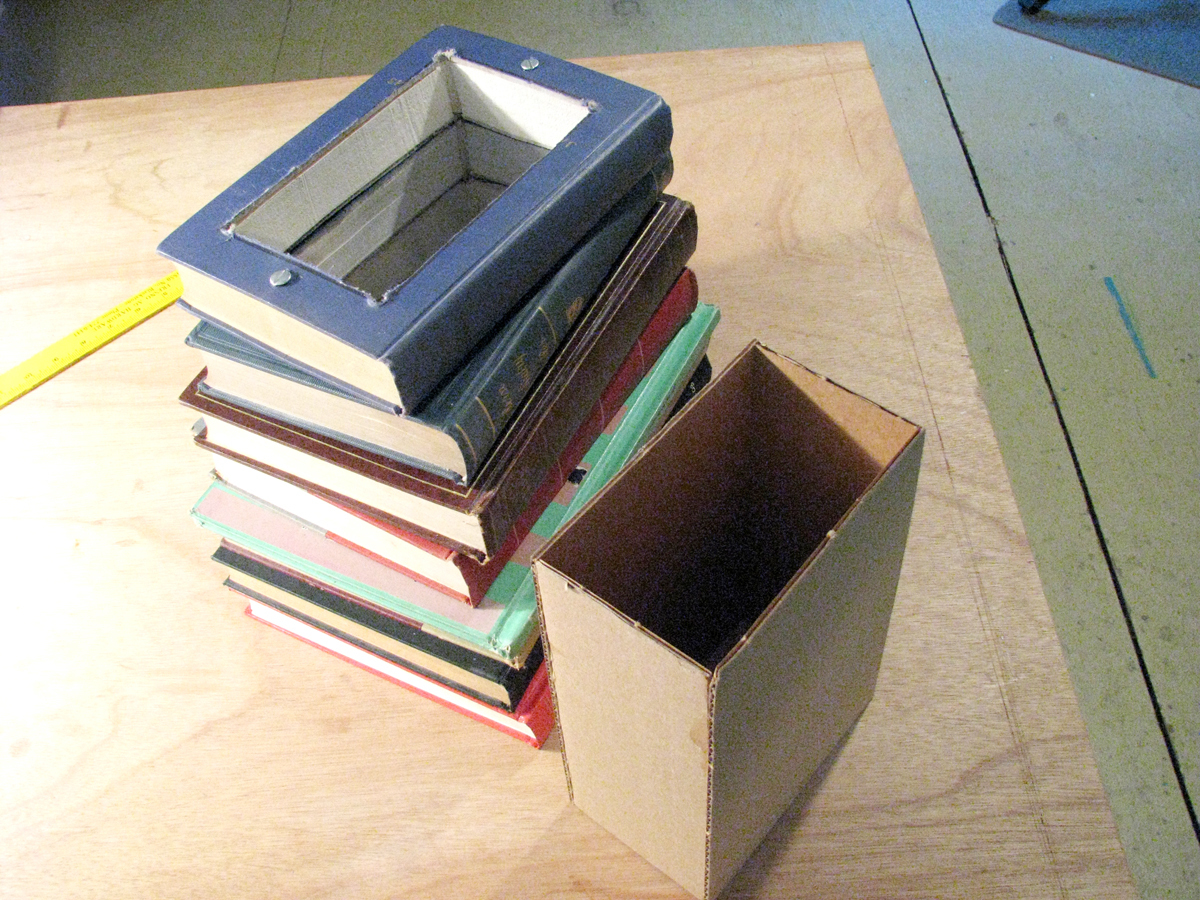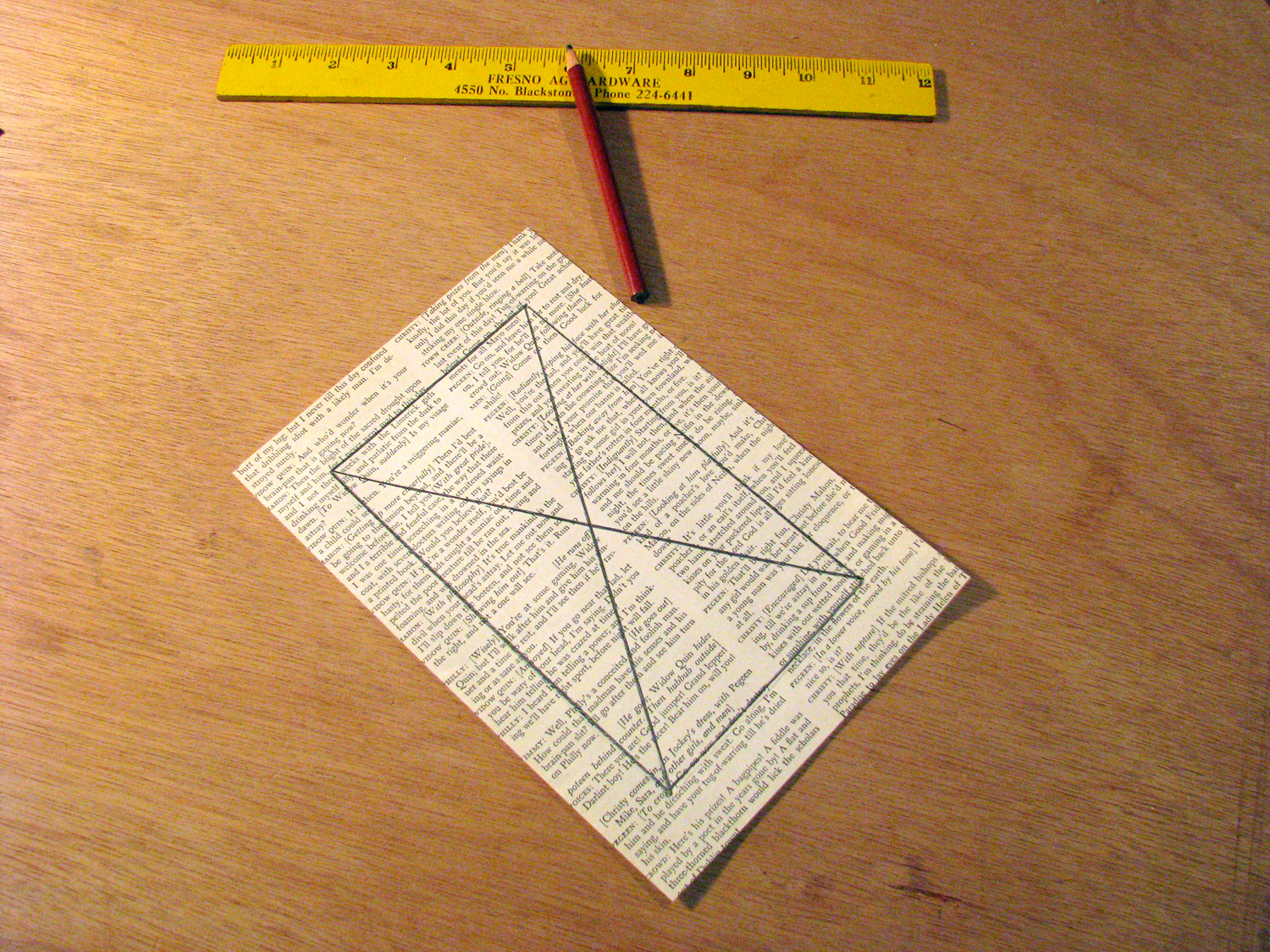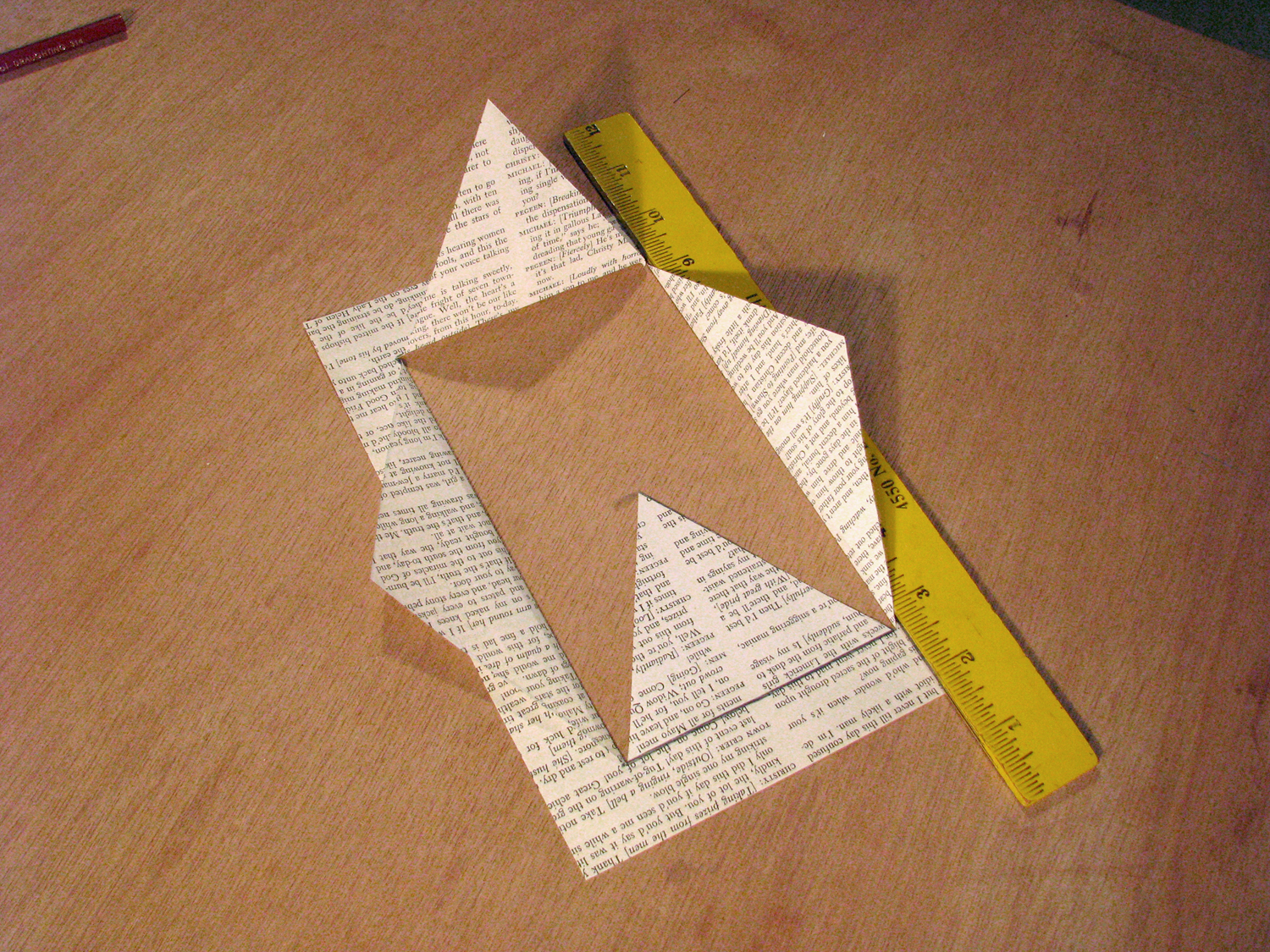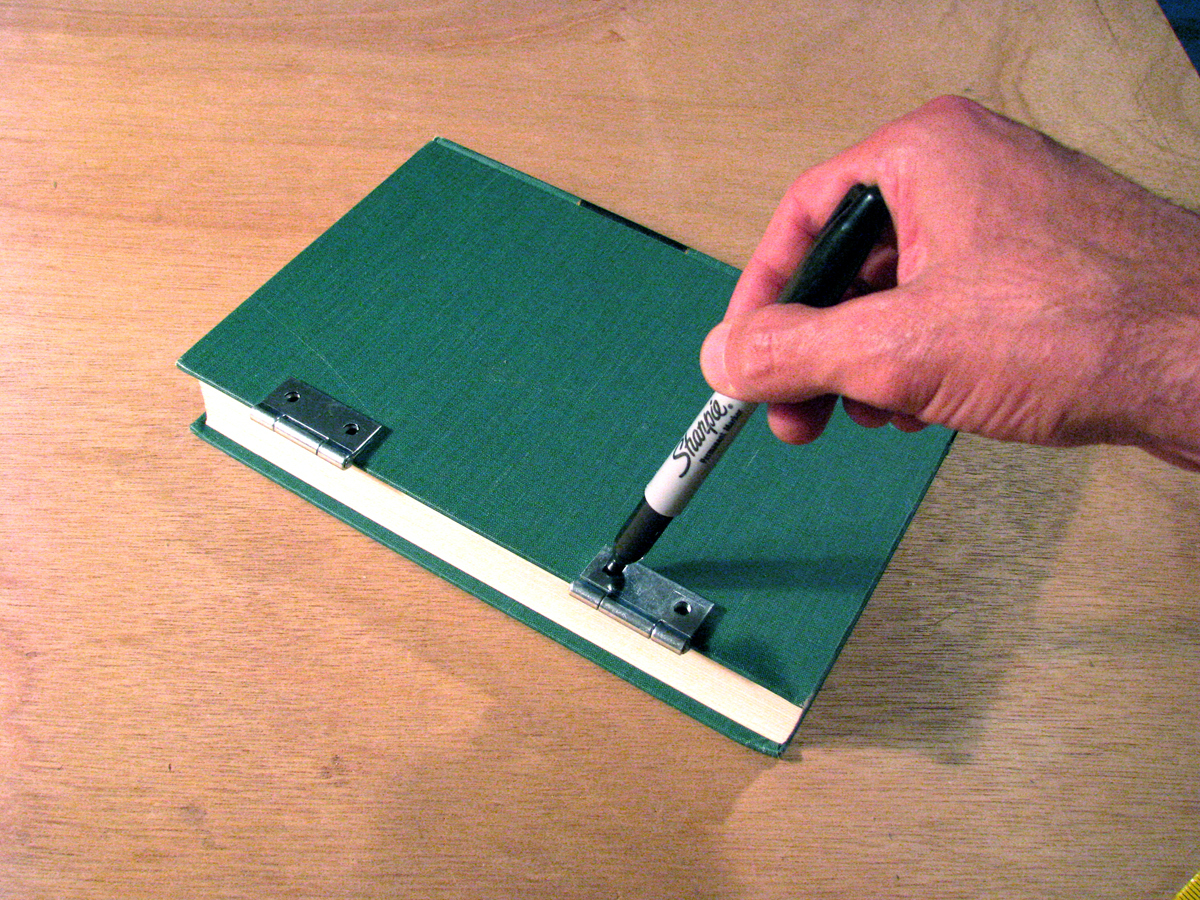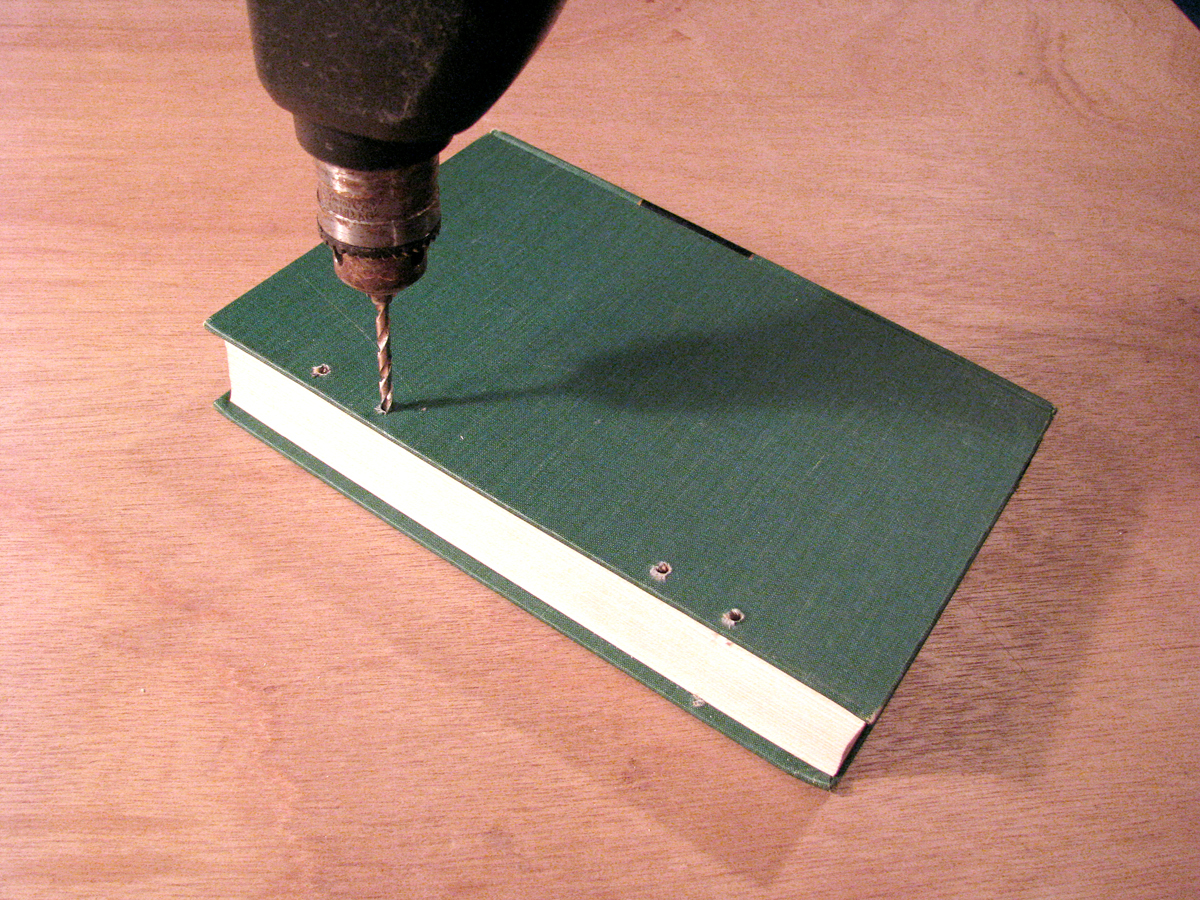With the 3/8″ drill bit, drill 1 hole just inside each corner of the traced template border — these 4 holes will serve as points of entry for the jigsaw blade. Insert the jigsaw blade into 1 corner hole, and cut along each traced line, stopping, removing, and repositioning the blade at each corner. Depending on the size of the book, you might find it necessary to stop and adjust the clamp or vise positioning to accommodate the saw foot.
When cutting, work slowly without forcing the blade, allowing the saw to do the work. While cutting the final line, reposition the sawhorses so that the center section of the book is supported from underneath, in order to keep the cut pages and cover from jumping and separating while the blade is in motion.
With the 9/32″ bit, drill 2 holes on the cover, one centered about ¾” above the top of the hollow and the other ¾” below the bottom of the hollow. These will be the channels for the binding posts.
Using a whisk broom or a dry paintbrush, clear the sawdust from the book and reposition it at the top of the stack configuration. Working from within the hollow, mark the inside of each cut corner onto the cover of the book below with a Sharpie. Remove the hollowed book, and using those marked corners as your guide, trace your template onto the next book. Repeat the drilling and hollowing process with all but the bottom book in the stack.




